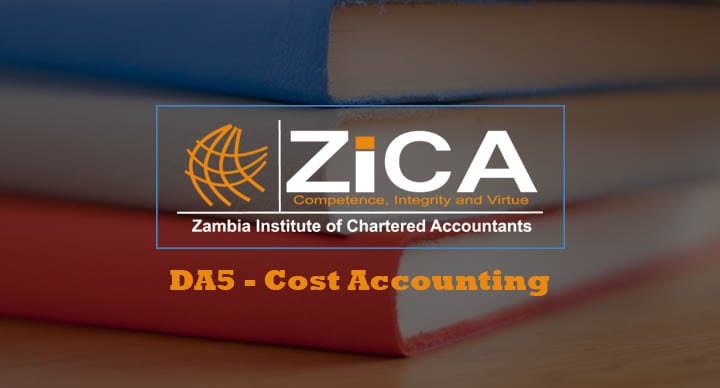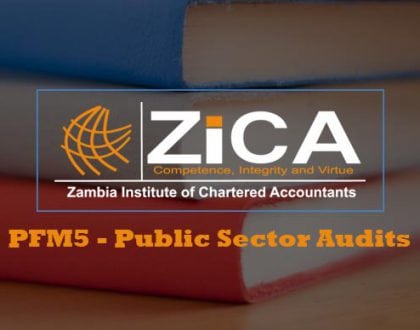DA5-Cost Accounting
No access plans exist.

Course Features
Course Details
DA5-Cost Accounting
Learning outcomes
On successful completion of D5, students should be able to:- Explain the purpose and importance of cost accounting for an organisation
- Distinguish between the various cost classifications and explain the reasons for the different classifications
- Identify and calculate cost information for use in decision-making
- Explain and apply the accounting methods for materials
- Explain and apply the accounting methods for labour
- Explain and apply the accounting methods for overheads
- Apply absorption costing, marginal costing and activity-based costing
- Apply a range of costing systems including job, batch, contract, service and process costing
- Record cost and revenue data in the accounting system
| Topic | Weighting |
| Introduction to costing accounting | 5% |
| Cost classification | 5% |
| Cost behaviour | 10% |
| Materials | 10% |
| Labour | 10% |
| Overheads | 10% |
| Absorption costing, Marginal costing and Activity based costing | 15% |
| Application of cost accounting information | 30% |
| Cost bookkeeping | 5% |
Content
- Introduction to cost accounting
- Meaning and scope of cost accounting
- Explain why accounts are prepared
- Illustrate how an organisation’s accounting system is affected by the nature of the business
- Define cost accounting
- List the users of accounting information
- Role and function of cost accounting within the organisational framework
- Explain the role and function of cost accounting for an organisation
- Understand the range of information that could be provided by the cost accounting system.
- Relationship between cost accounting, management accounting and financial accounting
- State the relationship of cost accounting to management accounting and to financial accounting.
- Meaning and scope of cost accounting
-
Cost classification
- The concept of cost
- Define historic cost and economic value
- Importance of cost recording, cost analysis and reporting
- Explain the importance of cost recording, cost analysis and reporting
- Cost objects and cost accumulation
- Explain the terms cost object, cost unit, cost centre, revenue centre, profit centre, responsibility centre
- Manufacturing cost elements: direct, indirect, prime, product, service, period, production and non-production costs
- Identify and give examples of each cost elements
- Distinguish between direct and indirect cost
- Distinguish between production, administration, selling and distribution overheads
- The concept of cost
-
Cost behaviour
- A Cost classification for decision purposes
- List the three elements of a cost unit
- Illustrate the meaning of cost classification
- Cost behaviour: variable, fixed, semi-variable and stepped fixed costs
- Explain the basic principle of cost behaviour
- Distinguish between the behaviour patterns of different types of cost
- Prepare a graph of each cost type
- Distinguish a graph for accountants and economists
- Methods of splitting semi variable costs
- Calculate fixed and variable elements of cost using the high/low method
- Calculate fixed and variable elements of cost using the scatter graph method
- A Cost classification for decision purposes
-
Materials
- Purchasing and cost control systems and procedures
- Explain the objectives and principles of inventory recording
- Describe the procedures and documents used for ordering and receiving inventory
- Calculate free inventory
- Inventory valuation methods
- Valuation of inventory issues and closing inventory using FIFO, LIFO and AVCO
- Inventory control techniques
- Describe the procedures and documents used for inventory issues
- Calculate inventory control levels (minimum, maximum, average and reorder level)
- Explain principles of EOQ Calculate inventory reorder quantity using EOQ
- Explain inventory count
- Describe the main features of Just in Time systems
- Purchasing and cost control systems and procedures
-
Labour
- Types of labour and Modes of remuneration
- Distinguish between direct and indirect labour
- Describe the main categories of remuneration and their features e.g. day rate systems, piecework systems and bonus/incentive scheme
- Procedures and documentation for effective recording and cost analysis
- Describe labour records such as clock cards and time sheets
- Calculate labour costs
- Calculate the labour ratios (efficiency, capacity, production volume and idle time)
- Incentive schemes
- Describe the features of incentive schemes and its advantage and disadvantage
- Labour turnover
- Explain labour turnover
- Identify labour turnover costs
- Calculate labour turnover rate
- Types of labour and Modes of remuneration
-
Overheads and Absorption Costing
- Characteristics of overheads
- Describe the characteristics of overheads
- Cost allocation, apportionment and absorption
- Describe the three stages of allocation, apportionment and absorption
- Explain how to deal with overheads of service departments
- Calculate absorption rate using various bases
- Explain the reasons for applying absorption rates
- Over and under absorption
- Describe the reasons for under and over absorption
- Calculate under- and over absorption
- Characteristics of overheads
-
Marginal costing, absorption costing and activity based costing
- A Marginal costing
- Explain what is meant by marginal costing and contribution
- Calculate marginal cost
- Prepare profit statement
- Calculate closing inventory value at marginal cost
- Explain how to deal with fixed costs using marginal costing
- Absorption costing versus marginal costing
- Differentiate between an Absorption Costing and Marginal Costing
- Prepare profit statement
- Explain the arguments for against Marginal and Absorption
- Reconciliation of absorption costing and marginal costing
- Reconcile marginal profit with absorption costing profit
- Activity-based costing
- Describe activity –based costing
- Define cost pool and cost driver
- Calculate the product cost using ABC
- A Marginal costing
-
Application of cost accounting information
- Job and batch costing
- Describe the features of job and batch costing
- Calculate the job cost, the batch cost
- Prepare a job and batch quotation
- Prepare the bookkeeping record entries for job and batch costing
- Contract costing
- Describe the characteristics of contract costing
- Prepare the contract account
- Explain how to deal with uncompleted contracts
- Calculate attributable profit on a contract
- Service costing
- Describe the specific characteristics of services
- Calculate the average cost per unit of service
- Process costing (WIP Valuation, Joint and by-product costing)
- Describe the features of processing costing
- Prepare a process account
- Calculate normal losses, abnormal losses and abnormal gains
- Calculate scrap value
- Explain the concept of equivalent units
- Calculate equivalent units where there is closing WIP
- Calculate opening work in progress values using both weighted average and FIFO Methods
- Distinguish between joint and by-products.
- Explain the methods of cost treatment of joints costs to joint products.
- Job and batch costing
-
Standard costing
- Types of Standards
- Define standard costing
- Explain the types of standards and how to establish the standards
- Standard Cost Card
- Prepare a standard cost card
- Basic Variances
- Define variances
- Calculate the following basic variances
- Materials total cost, materials price and materials usage variances
- Labour total cost, labour rate and labour efficiency variances
- Labour idle variance
- Variable overhead total cost, variable overhead expenditure and variable overhead efficiency variances
- Fixed overhead expenditure and volume variances
- Sales price and volume margin variances
- Types of Standards
-
Cost bookkeeping
- A Recording of transactions under cost accounting
- Explain why many organisations maintain a cost accounting system
- Interlocking bookkeeping system
- Define an interlocking system
- Illustrate the basic entries in an interlocking system
- State the advantage and disadvantage of an interlocking system
- Integrated bookkeeping systems
- Define an integrated system
- Illustrate the basic entries in an integrated system
- State the advantage and disadvantage of an integrated system
- A Recording of transactions under cost accounting
Format of the exam
| Section | Marks |
| Section A: 10 compulsory multiple choice questions, 2 marks each | 20 |
| Section B: Any 4 out of 5 questions, 20 marks each | 80 |
| TOTAL | 100 |
Recommended reading
- ZiCA D5 Study Manual
- Drury, C, Management and Cost Accounting, 7th edition, Cengage Learning EMEA, 2008
- Lucey, T, Costing, 7th edition, Cengage Learning EMEA, 2008
This course does not have any sections.





